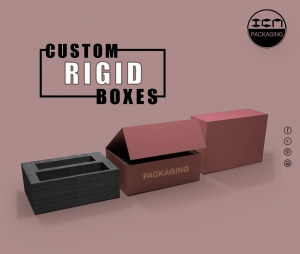please click here:
https://www.unicornendoscope.com/products-p2.html
Aviation plug connectors are specialized electrical connectors designed for use in demanding aerospace, aviation, and defense environments. These connectors provide reliable power and signal transmission under extreme conditions—vibration, temperature swings, moisture, and mechanical stress. In this article, we'll explore what aviation plug connectors are, how they work, different types and standards, how to choose the right one, and where the technology is headed.
Defining Aviation Plug Connectors
At its core, an aviation plug connector is a rugged, often circular, multi‑pin connector designed to handle harsh environmental conditions. These connectors typically consist of:
-
A metal shell, which provides mechanical strength and shielding.
-
Contacts or pins, which carry electrical signals or power.
-
Insulating material, which isolates the contacts.
-
A coupling mechanism (threaded, bayonet, or push-pull), to secure the two halves.
They differ substantially from standard commercial connectors because they must endure demanding performance conditions, such as high vibration loads, wide thermal ranges, and frequent mating/de‑mating cycles — all without failure.
Applications of Aviation Plug Connectors
These connectors are widely used in:
-
Aircraft systems: avionics, navigation, communication, lighting, engines.
-
Defense equipment: military aircraft, ground vehicles, radar, weapon systems.
-
Helicopters and UAVs (drones): where weight, reliability, and environmental tolerance are critical.
-
Ground support equipment: test rigs, power supply lines, maintenance systems.
-
Other harsh‑environment industries: railway, heavy machinery, offshore oil, where aerospace-grade reliability is required.
Because of their ruggedness, aviation connectors also find use in industrial systems that demand extreme durability.
Types and Series of Aviation Plug Connectors
There are many connector families in aviation, and it can be helpful to divide them by series, standard, coupling style, and functionality.
Circular Connectors: Military‑Style (MIL)
One of the most common categories comes from military specifications:
-
MIL‑DTL‑5015 connectors: These are among the oldest and most widely used circular connectors. They support high current, are mechanically robust, and come in various sizes and contact counts.
-
MIL‑DTL‑38999 (formerly MIL‑STD‑38999): These are high-performance, lightweight circular connectors suited for avionics. They resist vibration, corrosion, and are available in different shell styles (aluminum, composite, stainless).
Commercial Aviation Circular Connectors
Some connectors are designed specifically for aerospace but follow commercial standards or private specifications:
-
ARINC 600/404 connectors: Used in avionics racks and line replaceable units (LRUs).
-
EN (European) / IEC circular aviation connectors: Various circular connectors built to meet European aerospace standards.
Threaded and Bayonet Coupling
-
Threaded coupling connectors: These use screw threads to mate securely, widely used in MIL‑DTL‑5015 or similar.
-
Bayonet (quick‑connect) coupling: Found in MIL‑DTL‑38999 Series connectors, offering fast connect/disconnect and high resistance to vibration.
Push‑Pull / Quick‑Release Connectors
Some modern aviation connectors use push-pull mechanisms: you just pull the plug back (or push) to engage or disengage. These are valuable where frequent maintenance is needed or without tools.
Specialty Connectors
-
Fiber-optic aviation connectors: For high-speed data links in avionics.
-
Coaxial connectors: For RF signals, communications, radar.
-
Circular power connectors: High current and high-voltage types for power distribution.
Key Characteristics and Performance Metrics
When evaluating an aviation plug connector, there are several critical parameters to consider:
-
Number of contacts / pin count: Determines how many signals or power lines can be accommodated.
-
Current rating: How much current each contact can carry.
-
Voltage rating: Maximum voltage the connector is rated for.
-
Temperature range: Operating extremes (e.g., –55 °C to +200 °C).
-
Environmental sealing: Whether it is sealed to resist moisture or fluid ingress (IP rating).
-
Vibration / shock resistance: Ability to withstand mechanical stress.
-
Mating cycles: How many times the connector can be plugged/unplugged before failure.
-
Contact resistance: Electrical resistance at the contacts.
-
Shell material and plating: Aluminum, stainless, composite; corrosion resistance.
-
Weight: Especially important in aviation — lighter connectors reduce aircraft weight.
-
EMI shielding: Protection against electromagnetic interference.
Industry Standards and Regulations
Aviation plug connectors often must comply with rigorous industry standards and military regulations, which guarantee performance and safety.
-
MIL‑DTL‑5015: A long‑standing military spec for circular connectors, often used in older or very rugged systems.
-
MIL‑DTL‑38999: A performance-driven specification focused on high reliability, vibration resistance, and low weight.
-
ARINC standards: For commercial aircraft avionics systems. ARINC 600 is a widely used specification for rack‑mount connectors.
-
EN / IEC aerospace standards: Depending on the region, European connectors are designed to conform with EN or IEC specifications.
-
FAA / EASA certification: In some aircraft systems, components must be certified to meet aviation authority requirements.
Compliance ensures connectors behave predictably under stress, minimizing risk of failure in critical systems.
Materials and Construction
The choice of materials for aviation plug connectors is driven by performance.
-
Shell materials: Commonly aluminum alloy (lightweight), stainless steel (very robust), or even composite / thermoplastic (for weight savings).
-
Insulator materials: Thermoset plastics or ceramics, chosen for dielectric strength, temperature tolerance, and mechanical stability.
-
Contacts: Usually made from copper alloy (brass, beryllium copper) with plating: gold, silver, or other materials to optimize conductivity and corrosion resistance.
-
Seals / gaskets: Silicone, fluorosilicone, or other rubber-like materials for environmental sealing.
-
Coupling mechanisms: Threaded rings, bayonet keys, or push-pull latches made from tough metals or plastics.
Good construction ensures durability under repeated mating cycles, resistant sealing, and stable electrical performance.
Advantages of Aviation Plug Connectors Over Standard Connectors
It's helpful to compare how aviation connectors outperform more generic or commercial-grade connectors in demanding environments.
| Feature | Aviation Plug Connector | Standard Commercial Connector |
|---|---|---|
| Ruggedness | Designed for vibration, shock, extremes | Often not rated for high mechanical stress |
| Environmental sealing | Typically sealed (IP67, better) | May lack robust sealing |
| Temperature range | Very wide (e.g. –55 °C to +200 °C) | Usually limited, e.g. –20 °C to +85 °C |
| Mating cycles | High (thousands of times) | Lower in many cases |
| Weight | Optimized (often lightweight) | May be heavier for same strength, or less robust |
| Standards compliance | MIL, ARINC, etc. | Varies; often not certified for aerospace |
| EMI shielding | Strong due to metal shells | May not always provide good shielding |
As the table shows, aviation plug connectors deliver performance that simply cannot be matched by typical consumer or commercial connectors when life-critical reliability is required.
How to Choose the Right Aviation Plug Connector
Choosing the right connector depends on your application. Here are some guiding considerations:
-
Define the electrical requirements
-
How many circuits (pins) are needed?
-
What current and voltage are required?
-
Do you need power, signal, or both?
-
-
Consider environmental conditions
-
Will the connector be exposed to moisture, fuel, oil, or salt spray?
-
What are the operating temperatures?
-
Is there significant vibration or shock?
-
-
Evaluate mechanical constraints
-
How often will the connector be mated / demated?
-
Is weight a critical factor (e.g., on an aircraft)?
-
What coupling mechanism works best: threaded, bayonet, push-pull?
-
-
Look at standards and certification needs
-
Do you need military‑grade specification (MIL‑DTL)?
-
Is the system certified (FAA / EASA) and requires certified components?
-
Are you working with commercial avionics that use ARINC connectors?
-
-
Material considerations
-
Do you need corrosion resistance (e.g., marine or salt-laden atmosphere)?
-
Would composite or aluminium shells help reduce weight?
-
What plating is needed for contacts?
-
-
Maintenance and lifecycle
-
Expected mating cycles.
-
Ease of replacement.
-
Availability of spare parts.
-
-
Cost and procurement
-
Higher‑spec connectors cost more.
-
Consider cost vs performance trade‑offs carefully.
-
Lead time may be longer for specialized connectors.
-
Installation, Maintenance, and Best Practices
Proper handling and installation of aviation plug connectors are critical to durability and reliability.
-
Cable assembly: Use proper crimping or soldering tools to ensure correct termination of wires to contacts. Poor termination can lead to high contact resistance or failure.
-
Torque control: For threaded connectors, apply correct torque to coupling nuts. Over‑tightening can damage threads or seals; under‑tightening may degrade environmental sealing.
-
Sealing checks: After mating, verify that gaskets or O‑rings are seated correctly. Replace any damaged seals before use.
-
Inspection: Periodically inspect connectors for signs of corrosion, wear, or damage — especially if exposed to harsh environments.
-
Cleaning: Use appropriate cleaning agents (approved by the connector manufacturer) to avoid damaging insulators, seals, or plating.
-
Replacement policy: Establish a schedule or criteria for re‑certification or replacement after a certain number of mating cycles or years in service.
-
Environmental testing: When integrating a connector into a system, perform environmental stress tests (vibration, thermal cycling, humidity) to ensure the connector assembly meets requirements.
Challenges and Limitations
While aviation plug connectors are highly capable, they have drawbacks:
-
Cost: High-quality aviation connectors (especially MIL‑DTL‑38999, fiber‑optic, or specialized ones) can be expensive.
-
Weight: Even though optimized, metal connectors still contribute to weight; for ultra-light drones, every gram counts.
-
Complexity: High pin-count connectors or specialized ones (fiber, coax) involve complex assembly.
-
Lead time: Custom or certified connectors may take time to procure, especially with strict regulatory or defense requirements.
-
Compatibility: Ensuring compatibility with existing systems can be tricky: different series, standards, or pin‑outs.
-
Maintenance demands: Frequent mating cycles, especially in ground‑support equipment, can lead to wear or gasket failure.
Emerging Trends and Future of Aviation Plug Connectors
The aviation industry is evolving—and so are its connectors. Here are some key trends:
-
Miniaturization: As aircraft systems become smaller and lighter (drones, UAVs, eVTOL), connectors must shrink in size while maintaining performance. This drives demand for micro circular connectors.
-
High-speed data: With more digital avionics, high‑speed data links (Ethernet, fiber optics) are critical. Aviation connectors will increasingly support fiber‑optic or high-bandwidth copper designs.
-
Composite materials: The use of composite shells (thermoplastics or reinforced polymers) reduces weight while maintaining strength and reliability.
-
Additive manufacturing: 3D printing may play a role in producing custom connector shells or specialized coupling features, especially for prototyping or low-volume systems.
-
Smart connectors: Integrating sensing capability (temperature, humidity) into connectors can provide real-time health monitoring.
-
Interoperability: Standardization efforts may increase, allowing more interoperable connectors across civil and military aviation sectors.
-
Sustainability: Eco‑friendly materials or more recyclable connectors may appear, aligning with broader environmental goals in aviation.
Comparing Popular Aviation Connector Series
To make clearer how different aviation plug connectors compare, here is a table summarizing key characteristics of three common series:
| Connector Series | Shell Material | Coupling Style | Typical Applications | Strengths | Drawbacks |
|---|---|---|---|---|---|
| MIL‑DTL‑5015 | Aluminum, stainless | Threaded | Power distribution, legacy systems | High current, robust, many sizes | Heavier, older style, bulky |
| MIL‑DTL‑38999 (Series I / III) | Aluminum, composite | Bayonet / quick-lock | Avionics, flight control, high‑reliability signal use | Lightweight, vibration-resistant, many pins | More expensive, precise assembly required |
| ARINC Circular (eg ARINC 600) | Aluminum or alloy | Threaded or bayonet | Avionics LRUs, rack-mount units | Industry standard, reliable, certified | Less rugged than MIL connectors, cost |
This comparison highlights trade‑offs: MIL‑DTL‑5015 excels in power but is older; 38999 offers performance and weight savings; ARINC is widely used in commercial aircraft avionics.
Real‑World Use Cases
Here are some practical scenarios where aviation plug connectors make a difference:
-
Aircraft engine control: In a jet engine control system, connectors need to carry both power and sensor signals. Engineers might choose MIL‑DTL‑38999 connectors because of their resistance to vibration and ability to handle many signal lines.
-
UAV communications: A drone may use quick‑release bayonet connectors for its avionics bay, enabling rapid swaps of modules during field maintenance.
-
Ground test rig: A ground‑support power supply for an aircraft ground test panel may use MIL‑DTL‑5015 connectors to feed high-current supply to the aircraft's systems during maintenance.
-
Helicopter sensor pods: Exposed to the elements and vibration, sensor pods on helicopter rotor tips might use sealed circular connectors rated for wide temperature variation.
-
Avionics rack: In a commercial airliner, the line-replaceable avionics unit might connect via ARINC‑standard circular connectors to the aircraft's wiring, handling both data and power.
Recommendations for Engineers and Designers
If you are an engineer, systems integrator, or designer working with aviation plug connectors, here are some recommendations:
-
Start with requirements: Gather precise requirements early — number of signals, environment, certification needs. This avoids costly redesign.
-
Engage connector manufacturers: Speak to manufacturers early; they often provide data sheets, guidance, and custom solutions.
-
Prototype and test: Build sample assemblies and test them under environmental stress (vibration, thermal cycling, humidity) to ensure real-world performance.
-
Plan for maintenance: Choose connectors with replaceable seals and easy access, especially where frequent mating cycles or maintenance is expected.
-
Document everything: Maintain detailed drawings, torque specs, part numbers, and replacement schedules. This is vital for certification and long-term operations.
-
Train technicians: Poor assembly (wrong torque, damaged seals) is a major source of connector failures. Training can save cost and risk.
-
Monitor future trends: Keep an eye on emerging connector technologies—high-speed, lighter materials, embedded sensing—that may benefit your next design.
Conclusion
Aviation plug connectors are a critical yet often underappreciated component of aerospace and defense systems. Their ability to deliver reliable power and signal transmission under extreme conditions is foundational to the safety and performance of aircraft, drones, and ground‑support systems. By understanding the different connector types, standards, materials, and trade‑offs, engineers and designers can make informed choices suited to their applications.
From legacy power systems using MIL‑DTL‑5015 to modern avionics using lightweight MIL‑DTL‑38999 or ARINC connectors, the right aviation connector can dramatically improve system robustness, reduce weight, and simplify maintenance. As technology evolves, we are likely to see even more innovation—smaller connectors, fiber‑optic data, composite shells, and “smart” connectors that monitor their own health.
Selecting and correctly installing the proper aviation plug connector is not just a technical decision; it's a decision that affects reliability, safety, certification, and lifecycle cost.
Frequently Asked Questions
Q1: What is the difference between MIL‑DTL‑5015 and MIL‑DTL‑38999 connectors?
A1: MIL‑DTL‑5015 connectors are older, rugged circular connectors designed primarily for high current. They have a threaded coupling and are heavy but very robust. MIL‑DTL‑38999 connectors use newer designs with bayonet or quick‑lock coupling, lightweight materials, and high pin counts optimized for avionics where vibration and weight matter.
Q2: Are aviation plug connectors waterproof?
A2: Many aviation plug connectors are designed with environmental sealing, using gaskets or O‑rings to achieve ingress protection against moisture, which can make them effectively waterproof for many operational environments. The exact protection level depends on the connector rating and manufacturer.
Q3: How do I choose the right connector for high‑speed data in an aircraft?
A3: For high‑speed data, consider connectors that support fiber‑optic or high-bandwidth copper. Look at modern MIL‑DTL‑38999 series connectors or similar that are rated for data performance and check their insertion loss, return loss, and impedance specifications. Also, ensure they are certified for the aircraft's standards and environmental conditions.
Q4: What maintenance is required for aviation plug connectors?
A4: Maintenance includes regular inspection for corrosion or damage, verifying the integrity of seals (gaskets or O‑rings), ensuring contacts remain clean, applying correct torque when mating connectors, and replacing worn or damaged parts. Technicians should be trained to use the correct tools and cleaning agents.
Q5: Can I use aviation plug connectors in non‑aviation applications?
A5: Yes. Aviation plug connectors' durability, sealing, and performance make them attractive for industrial, marine, railway, or off‑shore applications. Their ruggedness often delivers long service life in harsh environments where other connectors would fail.
Q6: What are future trends in aviation connector technology?
A6: Emerging trends include miniaturization for UAVs, high‑speed data (fiber-optic, Ethernet), composite and lightweight materials, additive manufacturing, and smart connectors that integrate sensing capabilities. Sustainability and standardization across civil and military aviation are also gaining importance.
Summary
Aviation plug connectors are rugged, high-performance circular connectors designed for demanding aerospace environments. They support extreme vibration, temperature, and sealing requirements. This article explores types, standards, selection criteria, maintenance, and future trends in aviation connector technology.






